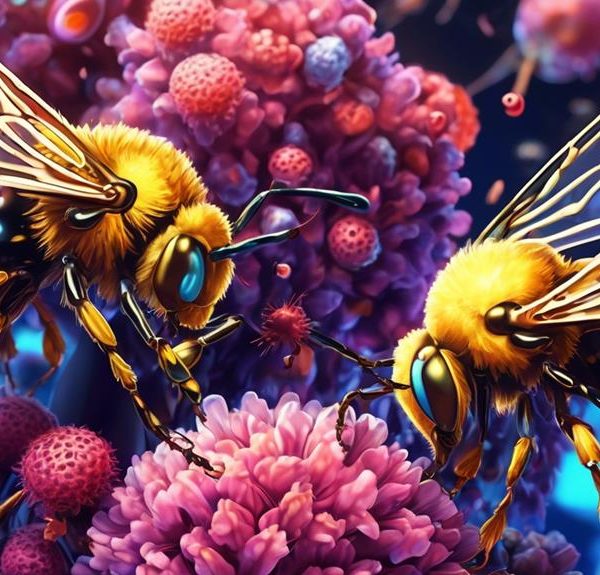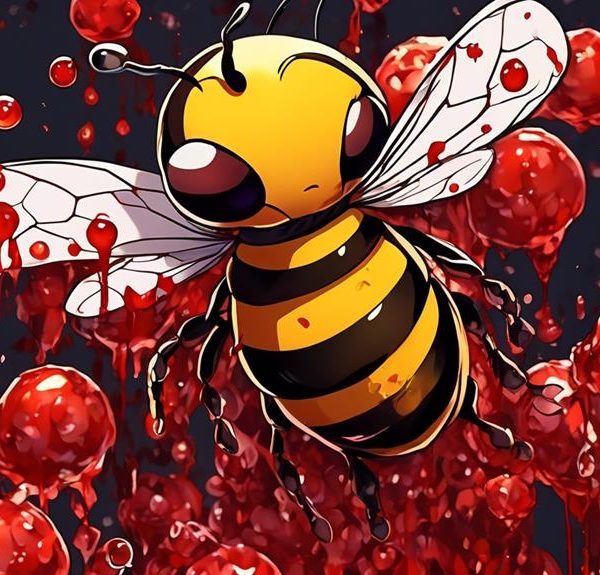Nose into the mystery of whether bees' farts smell like honey, unfolding a fascinating aspect of their digestive system and olfactory communication.
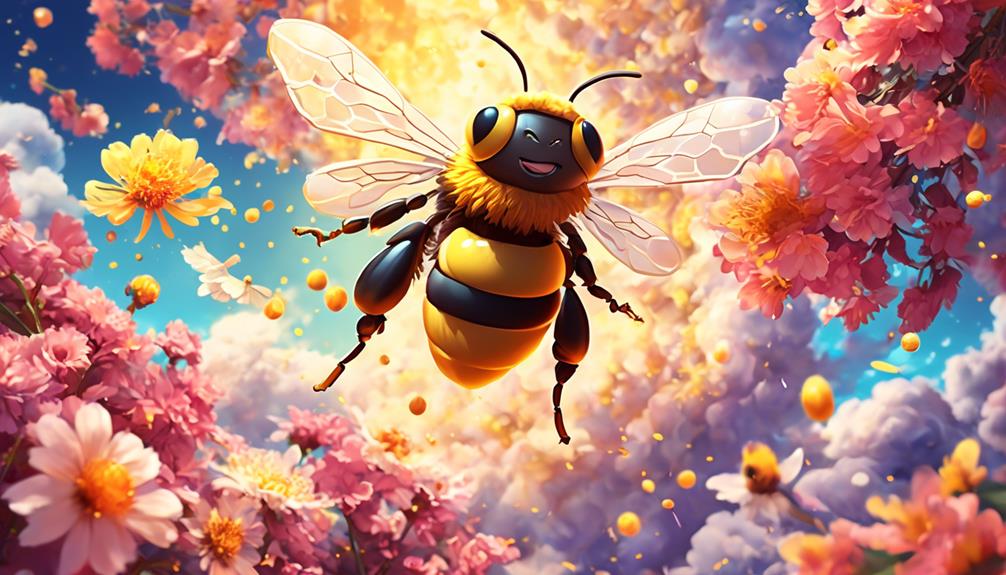
Do Bees Fart Smell Like Honey?
Imagine you're a bee, buzzing through a garden, laden with pollen and nectar, the sweet perfume of honey always on your lips.
Now, let's switch gears and consider a less poetic aspect of a bee's life: their digestion. You've probably never pondered this, but do bees pass gas like other creatures, and if they do, would it smell like honey? It's an unusual question, but it's not as far fetched as you might think.
From understanding the intricacies of bee digestion to uncovering the science behind insect olfactory signals, we're about to embark on a fascinating exploration of this less-known aspect of our buzzing friends' life.
Key Takeaways
- Bees have a digestive system that produces gases, including flatulence.
- Bee flatulence is influenced by their diet of nectar and pollen.
- Bee flatulence has a different composition from human flatulence, with higher levels of carbon dioxide and lower levels of methane and hydrogen.
- The aroma of bees is not solely tied to their honey production, but is influenced by the release of pheromones and the honey-making process.
Understanding Bee Digestion
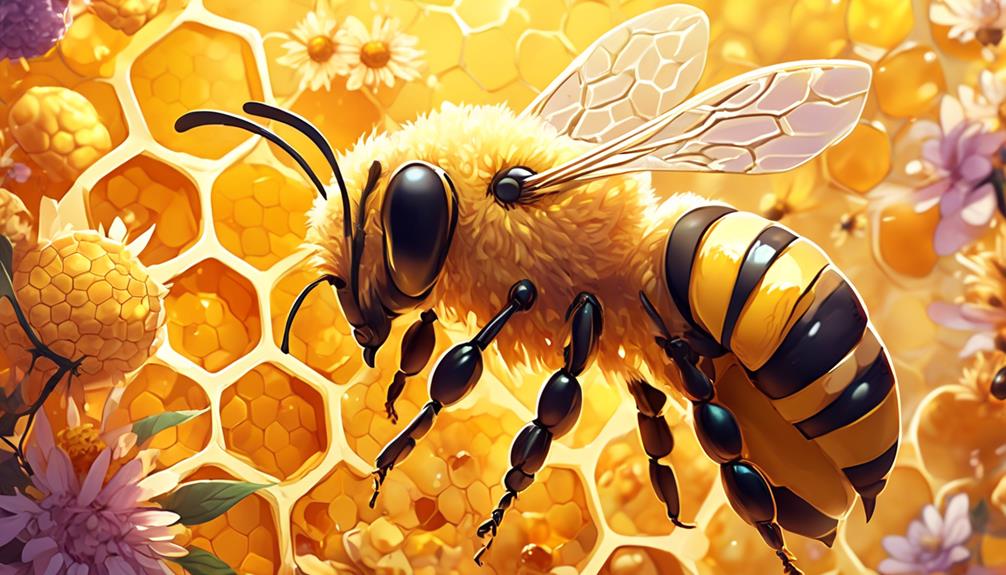
To comprehend if a bee's fart smells like honey, it's crucial to first understand their intricate digestive process. You see, bees consume nectar and pollen, the former being a sweet liquid produced by flowers, and the latter being a powder containing plant proteins. Their digestive system, like ours, transforms these substances into nutrients and energy.
First, a bee's mouth has strong mandibles for chewing pollen and a proboscis, a kind of straw for sipping nectar. Once swallowed, the food descends into their crop, a storage space where nectar mixes with enzymes. This nectar-enzyme mixture begins the process of converting nectar into honey.
Meanwhile, the pollen swallowed is taken to the midgut, where it's broken down into amino acids and lipids. This is vital for the bee's growth and development.
The bee's hindgut reabsorbs water and salts, compacting the remaining undigested waste into a pellet, which is eventually expelled.
The Science Behind Bee Flatulence
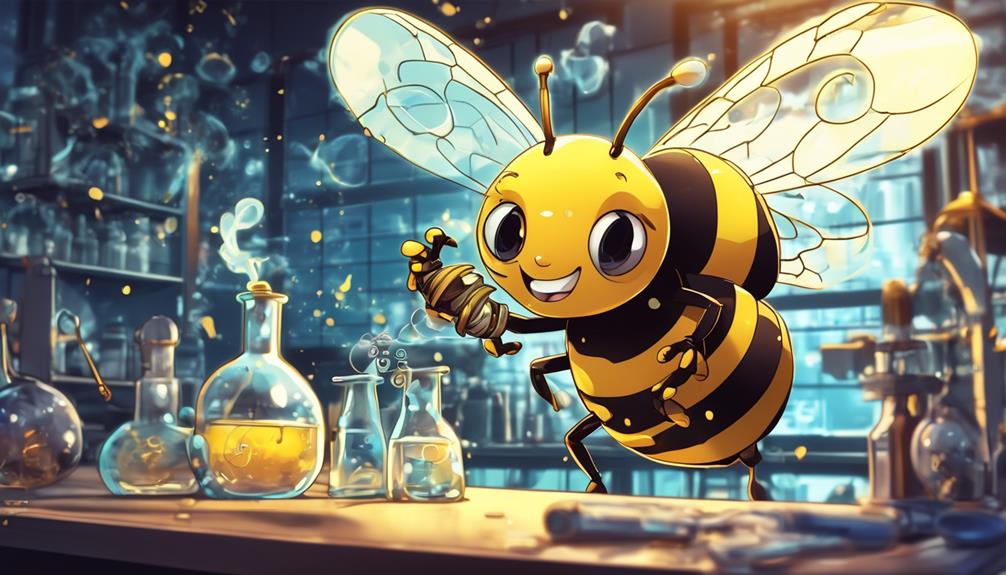
Diving into the fascinating realm of bee flatulence, you'll find that the process is more complex than you might initially suspect. Much like other organisms, bees have a digestive system that produces gases as a byproduct. These gases need to be expelled, hence the process of bee flatulence.
However, what sets bees apart is their diet. Bees primarily consume nectar, which is sugar-rich, and pollen, packed with proteins. This diet impacts the composition of their flatulence.
The following table provides a comparison of human and bee flatulence components:
Component | Human Flatulence | Bee Flatulence |
|---|---|---|
Nitrogen | High | Moderate |
Oxygen | Low | Moderate |
Carbon Dioxide | Moderate | High |
Methane | Moderate | Low |
Hydrogen | Moderate | Low |
The high sugar content in bee diet results in a higher production of carbon dioxide and less methane and hydrogen, compared to humans. So, while it's tempting to imagine a honey-scented bee fart, the science doesn't back it up. Bee flatulence is more likely to be odorless due to the lack of sulfur-containing compounds.
The Aroma of Bees: Fact or Fiction?
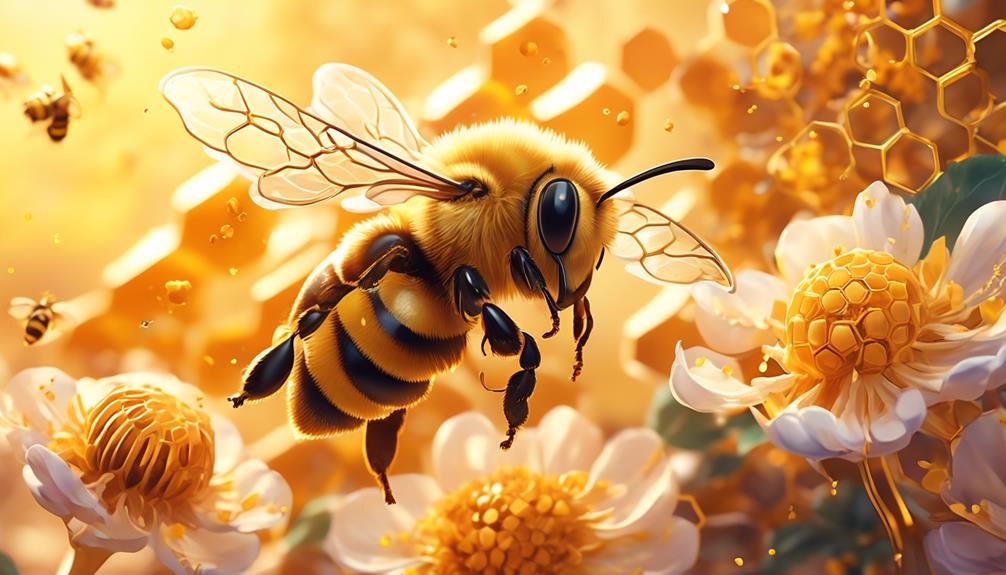
While it's a popular myth that bees might emit a honey-like aroma, the truth is far less sweet. In reality, bees have a more complex scent profile, which isn't solely tied to their honey production.
The aroma of bees arises from their pheromones—chemical signals emitted to communicate with each other. These pheromones don't carry a sweet, honey-like smell. Instead, they're more musky and earthy, varying significantly across different species. Worker bees, for instance, emit a scent that alerts others to the presence of a threat, while queen bees release pheromones to regulate the hive's social behavior.
Moreover, the assumption that bees would smell like honey ignores the fact that honey's aroma comes from the nectar of flowers, not from the bees themselves. The bees collect nectar and mix it with enzymes in their special stomachs, where it's transformed into honey.
Relation Between Honey and Bee Gases
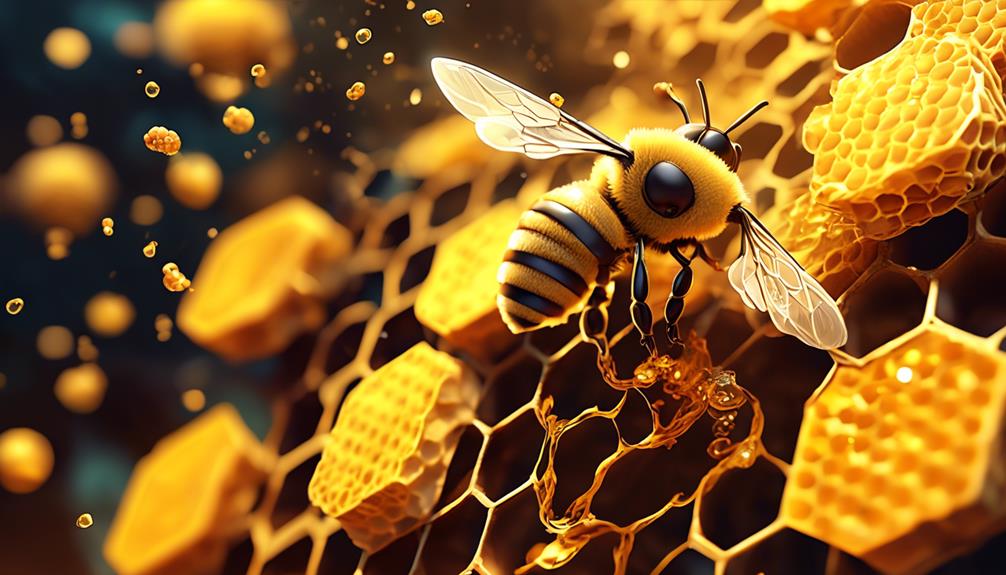
Shifting our focus from the aromatic profile of bees, let's explore the intriguing connection between honey and the gases bees produce. You might wonder if the honey-like smell often associated with bees is linked to the gases they emit. Indeed, there's some scientific truth to this.
Honeybees process nectar in their honey stomachs, where enzymes break it down into simple sugars. This process generates gases, primarily carbon dioxide. Now, here's the catch: these gases aren't expelled as flatulence as in mammals. They're primarily released when bees regurgitate processed nectar for honey production.
The distinct honey-like aroma often associated with bee gases doesn't come directly from these gases. Instead, it's likely a by-product of the honey-making process itself, which involves transformation of floral nectar, rich in volatile organic compounds, into honey. These volatile compounds, responsible for the unique aromas of different honey types, can potentially influence the olfactory profile of the hive, giving a pseudo-perception of 'honey-smelling' bee gases.
Discovering Insect Olfactory Signals
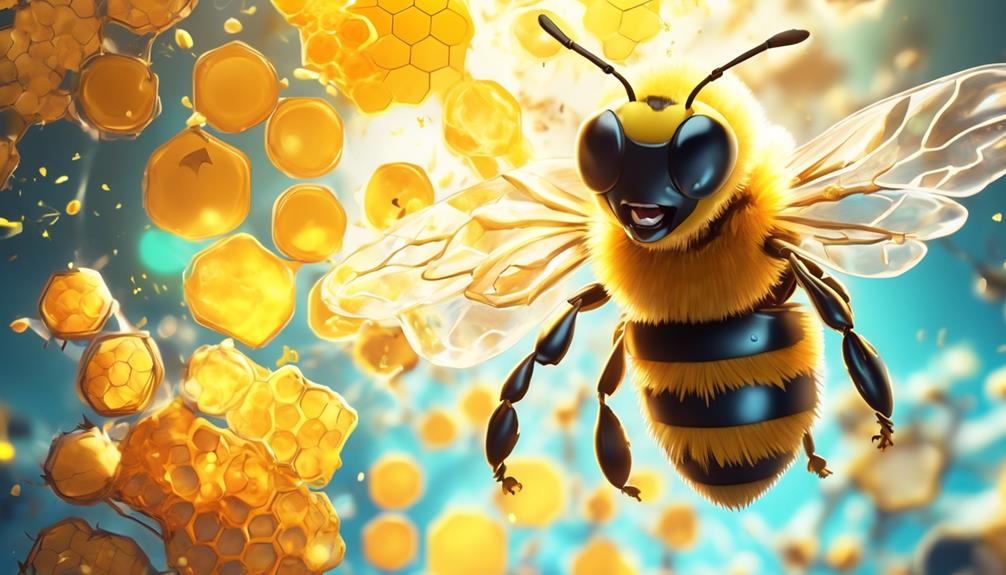
As we delve into the realm of insect olfactory signals, you'll find that these creatures have a highly developed sense of smell to communicate, navigate, and survive in their environment. It's fascinating to witness how insects, such as bees, use odors as a form of complex language.
These olfactory signals, also known as pheromones, are often used to communicate danger, mark territory, or find mates. They're typically released from specialized glands and detected by highly sensitive antennae. You'll be surprised to learn that a bee, for instance, can recognize the unique scent of its hive from among thousands of others.
Research continues to uncover how these signals are processed within the insect brain. It's a complex system that includes the antennal lobe, mushroom body, and lateral horn. These parts work together to interpret and respond to each signal.
Furthermore, did you know that insects can also use these olfactory signals to identify food sources? For instance, bees can detect the smell of nectar from miles away. This is crucial for their survival and the pollination of plants.
Debunking Bee-Related Myths
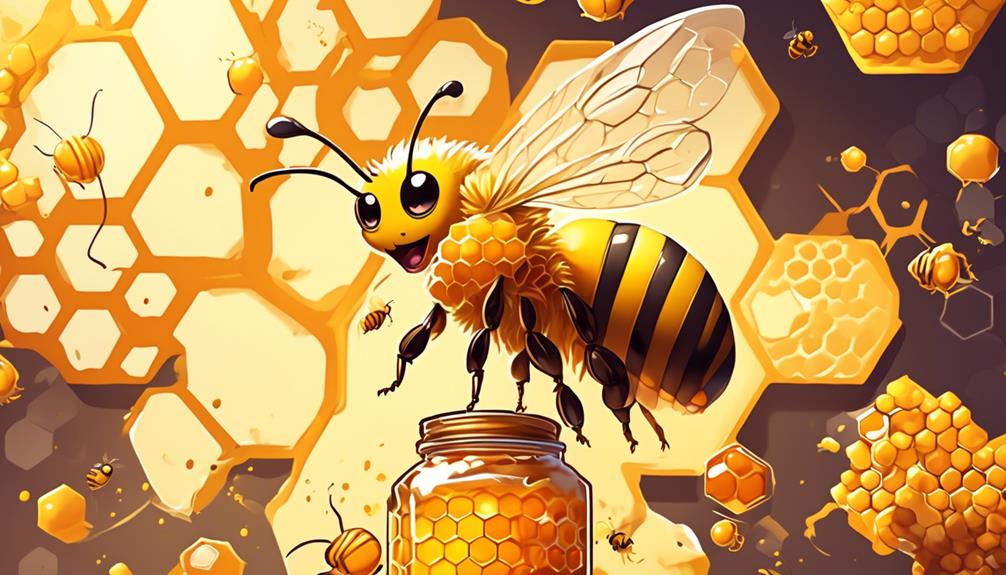
You might've heard some peculiar bee-based myths buzzing around, one of them being that bees' farts smell like honey; let's take a moment to sift the facts from the fiction. These misconceptions can often be entertaining, but they also obscure our understanding of these vital pollinators.
Here's a table that debunks some common myths:
Myths | Facts | Source |
|---|---|---|
Bees' farts smell like honey | Bees don't fart like mammals | ScienceDirect |
All bees sting | Male bees, or drones, don't have stingers | National Geographic |
Bees die after stinging | Only honeybees die after stinging | Smithsonian |
These myths are born out of misunderstandings. Bees don't have a digestive system like ours, so they don't produce gas in the same way. They do release odorous chemicals for communication, but it's not the same as farting. Similarly, not all bees can sting. Only female bees can, and among them, only honeybees die after stinging. It's essential to learn the truth about bees, as they play a crucial role in our ecosystem. Don't let myths cloud your understanding.
Frequently Asked Questions
What Common Household Substances Can Mimic the Smell of Bee Farts?"
You're probably wondering if common household substances can mimic the smell of bee farts. Unfortunately, there's no definitive answer, as bees' digestive processes are quite different from ours.
However, since bees consume nectar and pollen, you might try combining floral scents with a hint of sweetness to replicate their diet.
Are There Any Specific Species of Bees Known for Having More Potent Flatulence?"
You're curious about specific species of bees with more potent flatulence. There's no scientific research indicating that certain bee species have stronger flatulence than others. In fact, the topic of bee flatulence isn't widely studied.
However, it's known that their diet, mainly nectar and pollen, could potentially affect the scent of their gas, much as human diets do. But, don't worry, you're unlikely to smell a bee's fart!
Do Bees Have Any Unique Reactions or Behaviors When They Pass Gas?"
You're curious if bees have any unique reactions or behaviors when they pass gas, aren't you?
Well, currently there's no scientific evidence to suggest any specific behavioral changes when bees fart. They continue their daily activities like pollination and honey production without any interruption.
It's also important to note that their farts aren't harmful to humans or other bees.
Does the Diet of a Bee Influence the Aroma of Its Gas?"
You're inquiring if a bee's diet influences the aroma of its gas. While it's fascinating to consider, no scientific evidence supports this notion.
Bees mainly consume pollen and nectar, but their digestive process is different from ours. They don't fart in the traditional sense. If they did, it's unlikely the gas would smell like honey since honey is a byproduct of bees regurgitating nectar, not a result of digestion.
Are There Any Potential Health Risks for Bees Associated With Flatulence?"
You're wondering about potential health risks for bees from flatulence. While there's limited research on this specific topic, it's known that a bee's diet can influence its gut health. Imbalances could potentially lead to issues, including gas.
However, it's unlikely that flatulence poses a significant health risk to bees. It's more crucial to ensure they have a balanced diet and a healthy environment to prevent disease and support their overall well-being.
Conclusion
In conclusion, you'll find that bee flatulence doesn't smell like honey. This is due to the unique digestion system bees have, which doesn't process nectar in a way that would produce honey-scented gases.
Additionally, insect olfactory signals vary greatly from ours. So, while bees do pass gas, the notion of it smelling like honey is a myth.
Understanding these facts can help debunk misnomers and broaden your knowledge on our buzzing friends.

